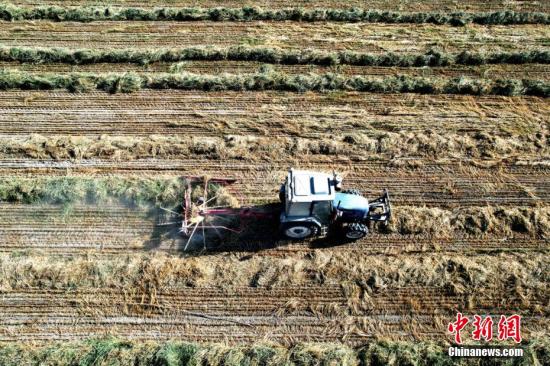Chinese scientists solve pre-harvest sprouting for rice and wheat
A Chinese research team from the Institute of Genetics and Developmental Biology (IGDB) of the Chinese Academy of Sciences (CAS) recently identified key genes used to control pre-harvest sprouting of rice and wheat, which will effectively reduce the agriculture loss and ensure China’s food security. The study was published in Nature Genetics on Monday.
Scientists believe that the combination of the two genes, gene SD6 and gene ICE2 which regulate the seed dormancy would work together to prevent the loss of agriculture caused by pre-harvest sprouting.
Seed dormancy is an important survival mechanism for plants since it allows them to weather conditions not conducive to their healthy growth.
At the same time, excessive dormancy may lessen cultivation time. In response, farmers often plant low dormancy cultivars of rice and wheat in order to achieve a higher, more uniform emergence rate after sowing.
Unfortunately, this practice has led to an unwanted worldwide production problem called pre-harvest sprouting, which severely reduces both grain yield and quality.
According to the research team, in rice, pre-harvest sprouting damages about six percent of the acreage of conventional rice and as much as 20 percent of hybrid rice acreage due to the long-term wet weather during the harvest season in southern China. In bread wheat, the direct economic loss caused by pre-harvest sprouting is estimated to be near $1 billion per year.
Temperature has a major effect on the strength of seed dormancy. The researchers revealed that the SD6/ICE2 molecular module controls rice seed dormancy in a temperature-dependent manner.
SD6 is up-regulated to trigger seed germination when seeds are at room temperature. However, at low temperature, SD6 is down-regulated while ICE2 is up-regulated to maintain seed dormancy.
By editing SD6 in rice cultivars and wheat variety, the scientists found out that it would improve the crop’s pre-harvest sprouting resistance.
China has been improving its capability for ensuring domestic food supply with higher annual output, contributing to global food security.
In 2022, the nation's summer grain output hit 147.4 million tons, a record high. A bumper autumn harvest is also expected, as 97.6 percent of autumn grain nationwide has been harvested as of end November, according to the MOA.

